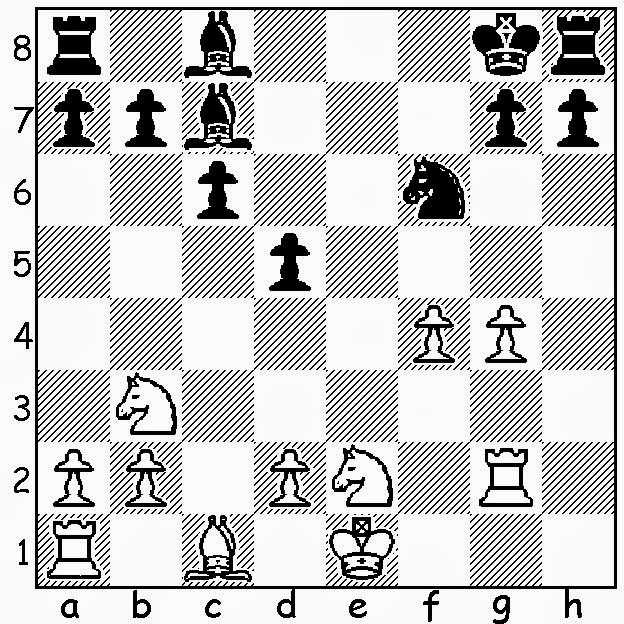Our chessfriend Philidor 1792 is on such a tactical roll, it seems a shame to not present three smashing games of his, just because they don't fit the Jerome Gambit template.
Here is the first. It contains a reminder (again) that even in 3-minute games, endgame skill is essential.
Philidor 1792 - guest3658
3 0 blitz, www.bereg.ru, 27.12.2013
1.e4 e5 2.Nf3 Nc6 3.Bc4 Nf6 4.Bb3 Be7 5.Nxe5
White, unable to reach a Delayed Jerome Gambit (i.e. 4...Bc5, 5.Bxf7+) switches to an opening reminiscent of the Chicago or Halloween Gambit.
5...Nxe5 6.d4 Nxe4
This looks a bit like I know you want me to play 6... Nc6, so I'll play something else... The problem - for Black - is that 6...Nc6 is the correct move, whereas the text leads to an equal game.
As in the Jerome Gambit, returning the sacrificed material for an even game is often the price a defender is willing to pay.
7.dxe5 O-O 8.Qd4 Nc5 9.Nc3 Nxb3 10.axb3 c6 11.Bf4 Bg5 12.O-O-O Bxf4+ 13.Qxf4
White would like to make something out of Black's backward d-pawn, or White's strong point at d6.
13...f5 14.Rd3 g5 15.Qc4+ Kh8 16.g4
Sharper was 16.h4.
16...Qe7 17.Re1 fxg4 18.Re2 Rf4 19.Rd4 Qf7 20.Qxf7 Rxf7
White's lead in development clearly compensates for Black's extra, doubled pawn. In turn, Black decides to give two pawns to activate his pieces.
21.Ne4 d5 22.exd6 Bf5 23.Nxg5 Rg7 24.Ne6 Bxe6 25.Rxe6 Rd8
White's advantage lives at d6.
26.Re7 Kg8 27.Rxg7+ Kxg7 28.Rxg4+ Kf6 29.Rh4 Rd7 30.c4 c5 31. b4 b6 32. bxc5 bxc5 33.b4
33...Rxd6 34. Rh6+ Ke5 35.Rxd6 Kxd6 36.b5 Ke5 37.Kc2 Kd4
Black's King has taken up a strong position, and now only one move keeps the advantage for White. Which one?
38.f4
White needed to find 38.Kb3! when Black's King cannot safely choose either side of the board to play on. White's King clearly wants to advance and capture Black's pawn on a7, followed by promoting his b-pawn. Black cannot stop that, and White's f-pawn at the same time.
Houdini gives as best play (30 ply) 38...Ke4 39.Ka4 Ke5 40.b6 axb6 41.Kb5 Kd4 42.f4 h5 43.f5 Ke5 44.Kxb6 Kxf5 45.Kxc5 and White's King will lead his passed pawn to the Queening square.
38...Kxc4
Black misses his opportunity, as 38...Ke4 would now win, as the tempos now favor him.
Now the game is even.
39.f5 Kd5 40.Kd3 Ke5 41.Kc4 Kxf5 42.Kxc5
42...h5
The wrong kind of activity. Instead, 42...Ke5 would hold the draw.
43.Kc6 h4 44.Kb7 h3 45.Kxa7 Kf4 46.b6 Kf3 47.b7 Kg2 48.b8=Q Black resigned














































